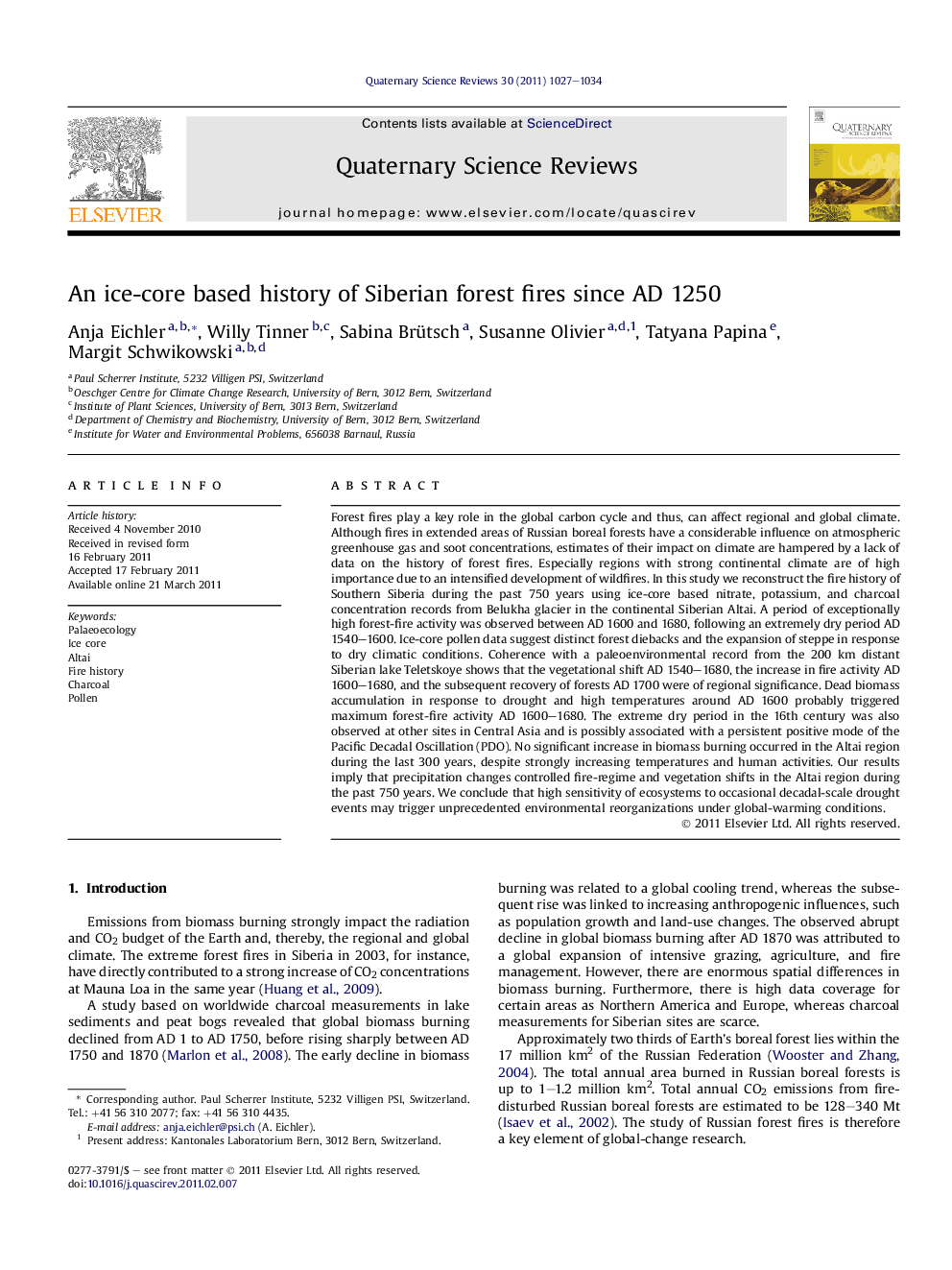| کد مقاله | کد نشریه | سال انتشار | مقاله انگلیسی | نسخه تمام متن |
|---|---|---|---|---|
| 4735518 | 1640913 | 2011 | 8 صفحه PDF | دانلود رایگان |

Forest fires play a key role in the global carbon cycle and thus, can affect regional and global climate. Although fires in extended areas of Russian boreal forests have a considerable influence on atmospheric greenhouse gas and soot concentrations, estimates of their impact on climate are hampered by a lack of data on the history of forest fires. Especially regions with strong continental climate are of high importance due to an intensified development of wildfires. In this study we reconstruct the fire history of Southern Siberia during the past 750 years using ice-core based nitrate, potassium, and charcoal concentration records from Belukha glacier in the continental Siberian Altai. A period of exceptionally high forest-fire activity was observed between AD 1600 and 1680, following an extremely dry period AD 1540–1600. Ice-core pollen data suggest distinct forest diebacks and the expansion of steppe in response to dry climatic conditions. Coherence with a paleoenvironmental record from the 200 km distant Siberian lake Teletskoye shows that the vegetational shift AD 1540–1680, the increase in fire activity AD 1600–1680, and the subsequent recovery of forests AD 1700 were of regional significance. Dead biomass accumulation in response to drought and high temperatures around AD 1600 probably triggered maximum forest-fire activity AD 1600–1680. The extreme dry period in the 16th century was also observed at other sites in Central Asia and is possibly associated with a persistent positive mode of the Pacific Decadal Oscillation (PDO). No significant increase in biomass burning occurred in the Altai region during the last 300 years, despite strongly increasing temperatures and human activities. Our results imply that precipitation changes controlled fire-regime and vegetation shifts in the Altai region during the past 750 years. We conclude that high sensitivity of ecosystems to occasional decadal-scale drought events may trigger unprecedented environmental reorganizations under global-warming conditions.
► We investigate fire history of Southern Siberia since AD 1250 using Belukha ice core.
► Forest-fire activity maximum AD 1600–1680 was deduced from geochemistry and charcoal.
► Preceding dry period 1540–1600 and high temperatures are main causes for fire maximum.
► AD 1540–1600 PDO induced precipitation changes controlled fire regime and vegetation shifts.
Journal: Quaternary Science Reviews - Volume 30, Issues 9–10, May 2011, Pages 1027–1034